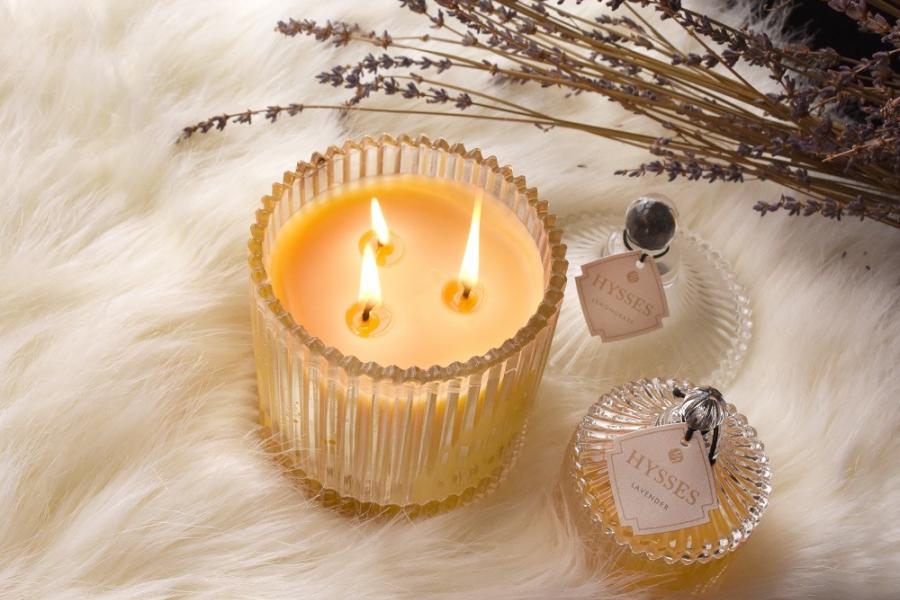The trend of DIY essential oil candles has taken off, bringing a warm glow and delightful scents into homes. Unlike synthetic fragrances, essential oils offer a natural alternative that not only enhances your environment but also promotes a healthier lifestyle. By making your own candles, you can create a soothing atmosphere while ensuring that your space is filled with eco-friendly, non-toxic ingredients.
Essential Oils for Candle Making
When it comes to choosing essential oils for candle making, there are plenty of delightful options:
-
Lavender: Known for its calming properties, lavender creates a relaxing ambiance that’s perfect for winding down.
-
Eucalyptus: This refreshing scent can help clear the mind and is invigorating.
- Citrus Blends: Oils like orange and lemon are energizing and uplifting, great for brightening up any space.
Selecting the right essential oils can greatly influence the mood and ambiance of your candles. For instance, calming oils like chamomile are ideal for creating a serene atmosphere, while energizing oils like peppermint can invigorate your environment. Consider the scent strength and intended effects when choosing your oils.
How to Make Candles with Essential Oils

Making your own candles is a rewarding process! Here’s a step-by-step guide:
Materials Needed:
-
Soy Wax: A cleaner-burning option that’s eco-friendly.
-
Wicks: Choose the right size for your container.
-
Essential Oils: Your chosen scents.
- Containers: Glass jars or metal tins work well.
Instructions:
-
Melt the Wax: Use a double boiler to melt the soy wax.
-
Measure and Mix: Once melted, carefully add your essential oils to the wax (more on that later!).
-
Set the Wick: Center the wick in your container before pouring in the wax.
-
Pour the Wax: Slowly pour the wax into your container, ensuring the wick remains centered.
- Let Cool: Allow the candle to cool and set completely before using.
How Much Essential Oil to Add
Finding the right amount of essential oil is crucial for a balanced scent throw. A general guideline is to use about 1 ounce of essential oil for every pound of wax. It’s also important to add essential oils at the right temperature—ideally, around 185°F—to prevent evaporation and ensure the fragrance lasts.
How to Make Soy Candles with Essential Oils
Soy wax is an excellent choice for candle making due to its eco-friendly properties and better scent retention. Here’s a quick overview of the process:
-
Step-by-Step: Follow the melting, mixing, and pouring instructions above.
- Maximizing Scent Throw: Using a higher ratio of essential oil and ensuring the wax is poured at the right temperature will enhance the scent throw of your soy candles.
Fragrance Oils vs. Essential Oils in Candles
Understanding the difference between essential oils and fragrance oils can help you make informed choices for your candles:
-
Natural Properties: Essential oils come from plants and offer therapeutic benefits, while fragrance oils are synthetic and may lack those natural properties.
- Scent Longevity: Fragrance oils may last longer, but they don’t provide the same health benefits. Some candle makers prefer fragrance oils for their wide variety of scents and consistency.
When to Use Fragrance Oils
In some scenarios, fragrance oils perform better, particularly when scent longevity is crucial. However, for those seeking a natural approach, essential oils are the way to go.
Can I Add Essential Oil to Candles?
Absolutely! Just remember to:
-
Temperature Control: Add essential oils at the right temperature to maintain their properties.
- Moderation: Use the right amount—too much can overpower the candle, while too little may lead to a faint scent.

Burning Essential Oils in Candles
When it comes to burning your candles, keep these safe practices in mind:
-
Choosing Oils: Some essential oils handle heat better than others. Avoid oils that may evaporate quickly.
- Safety Tips: Ensure good ventilation, keep an eye on the candle while burning, and avoid placing it near flammable materials.
What Are Some Essential Oil Candle Making Tips?
Here are some top tips for successful candle making:
-
High-Quality Oils: Using quality essential oils ensures better scent and benefits.
-
Experiment: Don’t hesitate to mix different oils to find your perfect blend.
-
Wick Centering: Keep the wick centered for an even burn.
- Curing Time: Allow candles to cure for at least 24-48 hours for the best scent throw.
Common Mistakes to Avoid in Candle Making
Watch out for these pitfalls:
-
Temperature Issues: Adding oils at too high a temperature can lead to evaporation.
-
Imbalanced Scent: Using too much or too little essential oil can ruin the fragrance.
-
Wick Choices: Picking the wrong wick can lead to uneven burning or soot.
-
Wick Trimming: Always trim the wick before lighting to prevent smoke.

Safety Tips for Using Essential Oils in Candles
For a safe candle experience, remember:
-
Ventilation: Ensure the space is well-ventilated when burning candles.
-
Monitoring: Keep an eye on the candle to prevent overheating.
- Proper Storage: Store candles away from flammable materials and ensure wicks are trimmed.
Creating your own candles with essential oils is a fulfilling and enjoyable project that offers both ambiance and therapeutic benefits. Experimenting with different essential oil combinations can lead to unique, personalized scents that brighten your home. Remember to follow safety guidelines and enjoy the process of crafting something special!



Share:
Essentials Unleashed: The Magic and Safety of Oil Diffusion
Aromatic Adventures: Enhance Your Room and Car with Essential Oils